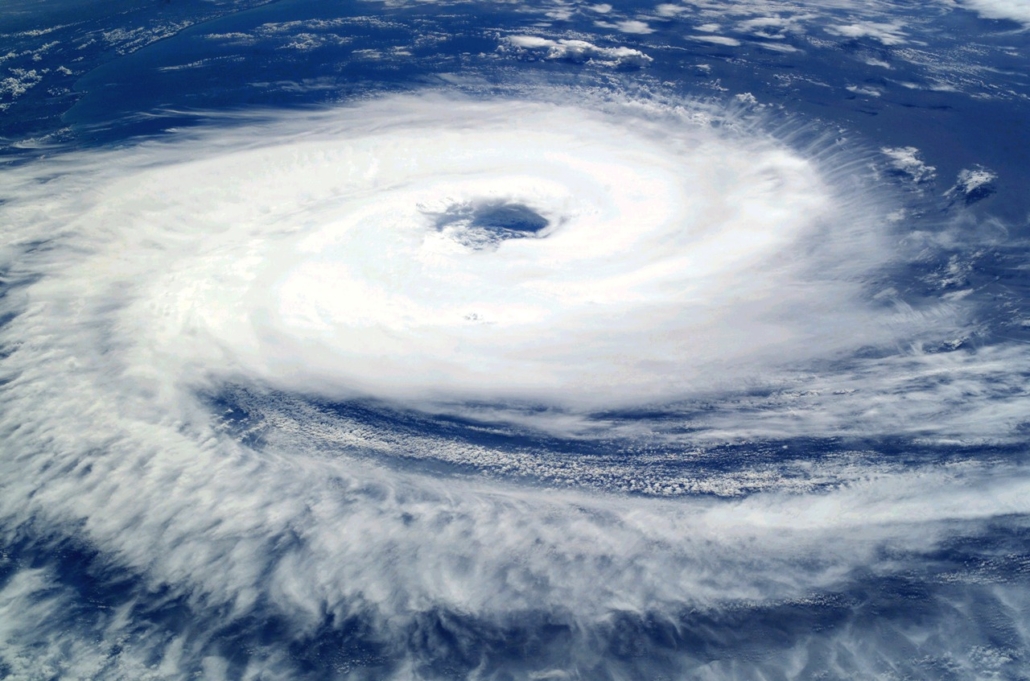Backup Power Generation: Declare Independence from the Texas Electric Grid
The Texas power grid has been under a microscope in the wake of its epic failures during Winter Storm Uri in 2021.
For many business owners, it was a wakeup call: without backup power, their operations were completely at the mercy of factors outside their control. And even if the grid weren’t unstable, this lack of sovereignty is enough to keep any responsible business owner up at night.
Think about it this way: for 99% of the time, there’s enough power on-grid and more than enough in reserves to meet demand. So, what you are managing for is that remaining 1% of time that power could be down. What is 1% of operating time worth to your business each year?
Unfortunately, despite (in our opinion) admirable work being done by the people who manage the grid to improve stability, real change is too far away to count on for a viable business that wants to stay that way over the next several years, at least.
Here’s why that’s the case and what you can do about it in the meantime…
Texas’s Power Grid: A Snapshot
To get an idea of how unique the Lone Star State’s electricity picture is, consider that there are essentially three power grids, or self-contained interconnections of power production and transmission, in the entire United States: Eastern, Western, and Texas.
Although about 14% of Texas counties are covered by one of the other two grids, most people think of Texas power synonymously with ERCOT (Electric Reliability Council of Texas), the state’s regional transmission organization (RTO).
Like other RTOs, ERCOT doesn’t own any power assets. Instead, its mandate is to ensure grid reliability and optimize supply and demand for wholesale electric power between generators and the more than 130 utilities/retail electricity providers (REPs) operating in ERCOT.
This is a serious responsibility due to the fact that the state’s electricity market is deregulated, meaning power companies can compete for customers’ business to deliver their electricity. It’s also due to the fact that Texas led the nation in both electricity generation and consumption in 2021.
This deregulation has allowed Texans to pay some of the lowest electricity prices in the country, but has also exposed it to higher peak pricing in times of extreme weather. Peak pricing–imagine $6,000 per MWH versus $50-$90 per MWH typically–is a feature not a bug, so to speak. It’s designed to encourage stability in times of volatility. But due to more stable thermal generation going offline in favor of more intermittent renewable generation, in addition to other factors, peak pricing has changed from more of an edge case to a more common occurrence.
Because the state is essentially isolated from other power grids, it must source nearly all of its electricity needs internally. When those sources are maxed out or unavailable, outages can and do happen.
Texas Grid in Numbers
26 million+
power customers in ERCOT
80,000 MW
peak demand record to date (set 6/23/2022)
53,000 miles
high-voltage transmission lines
$25 billion
in wholesale electricity bought and sold annually
Is the Texas Power Grid Strained?
Every power grid is a dynamic system with conditions constantly changing, and virtually every grid deals with strain at some point for one reason or another. As a business owner or project manager, the question to ask is whether–in totality, based on past experience, recent developments, and educated forecast–the grid is taxed to such an extent that you have cause to worry about the impact on your business.
Using that standard, it’s clear that taking action to improve your power redundancy is not only prudent, it has become virtually a prerequisite to doing business in Texas, in our opinion.
Examples of Times the Grid Couldn’t Cope
Winter Storm Uri
The most infamous example of Texas grid failure in recent memory resulted from the deadliest winter storm in North America in nearly two decades. Two-thirds of Texans lost power at least once during and after the storm, for an average of 42 hours, and many lost it for days.
Not only did power prices spike to $9,000/MWh as 40% of capacity went offline, it was later revealed that the entire grid came within five minutes of complete collapse, which would have knocked out power for months.
Groundhog Day Blizzard
Before Uri there was this huge storm in 2011 that necessitated rolling blackouts across more than 75% of Texas as demand overwhelmed the grid.
As during Uri, gas well-head freezing, instrumentation failures, and other winterization shortcomings knocked dozens of generators offline.
An ensuing report by the North American Electric Reliability Corporation included warnings such as “resource sufficiency in Texas shows signs of concern.”
Hurricane Ike
Although Hurricane Harvey in 2017 would be much stronger and deadlier, 2008’s Ike involved far more Texans losing power due to being primarily a wind event. Estimates range up to 4.5 million Texans who lost power, some for months after the storm made landfall. A report commissioned by Houston’s mayor in the aftermath found trees and limbs blown onto power lines and knocking them out were the biggest culprits for outages.
As an example, major utility CenterPoint Energy said that although 90% of new residential lines were buried underground, the cost to move the remaining lines underground would cost $40 billion and was therefore unfeasible. That’s not even taking into account the existing distribution and transmission lines in the service areas.
What’s Causing the Grid Strain
Here are some of the primary culprits behind Texas’ grid instability:
Increase in Demand
Two of the five hottest Texas summers on record have occurred in the last four years. During Summer 2022, ERCOT’s peak demand record was broken no fewer than 11 times as residents cranked up air conditioners to keep cool.
Twice in one week in July 2022, ERCOT resorted to issuing an appeal to residents to turn up thermostats and refrain from running major appliances during the hours of 2-9 p.m. to conserve energy. The Council cited record high demand, low wind for wind generation, forced outages in thermal generation, and cloud cover hindering solar power production.
Texas’ grid also has more people and businesses than ever to sustain as the state led the nation in sheer numbers of resident growth from 2010-2020, with 4.2 million people moving in. Some of these new Texans work for cryptocurrency mining companies, which both local and state governments have courted with tax breaks and special power deals. These mining operations draw enormous amounts of power, and so many have moved here already that they may soon single-handedly demand as much power as the entire state of New York.
Outdated and Inadequate Infrastructure
Winter Storm Uri exposed the vulnerabilities of the Texas power grid that had actually been known for at least a decade but largely ignored. In the extreme cold, all sources of electricity generation–natural gas, wind, coal, nuclear, and solar–slowed, as pipes froze over and equipment malfunctioned. Ironically, many power plants run on natural gas, creating a closed loop in which the negative effects cascaded because each depended on the other and neither was sufficiently winterized.
Much-needed maintenance at power plants can help prevent outages due to equipment failure, but because the grid can’t spare the loss of power during high-demand periods, that maintenance can wind up being deferred. The result can be plants crashing anyway, usually at inopportune times.
In the aftermath of Uri, ERCOT has changed the rules on power plant maintenance scheduling to give itself the ability to forbid a plant from going offline if ERCOT determines it a risk to system reliability, a move some say does not give plants enough time to perform necessary repairs.
Growing Pains in the Green Transition
Even though Texas is already the top wind power-producing state and the #2 solar-producing state, development of more generation of both types of resources is ongoing. However, these “intermittent” energy sources are notoriously prone to volatility and their performance is dictated by the weather.
At the same time, coal-fired plants and other traditional power plants that have delivered a large chunk of ERCOT’s capacity supply are being phased out at a rate that makes it difficult for renewable resources to fill the gap fast enough.
Infrastructure is an issue here, as well, as the places where there is enough wide open land for solar farms and massive wind turbines tend to be far from urban areas from which the lion’s share of the power demand emanates. Getting transmission lines in place is a slow process of permitting and citing, and funding has been inadequate, as well.
Uri illustrated in vivid detail what a problem insufficient transmission is when ERCOT curtailed production from renewables-rich areas to avoid exceeding capacity on the lines.
In fact, ERCOT estimates it will need to restrict output from West Texas solar and wind farms by one-third by 2035 if significant changes aren’t made to the electricity delivery process.
Is It Likely to Become More Stable?
Some steps have been taken to make power plants more prepared for weather like that seen during Uri, although some argue the Texas Railroad Commission, which regulates the gas industry, could be doing more to impose winterization standards. And although cold weather of that extreme was a rarity in balmy Texas, some argue extreme weather events are becoming more common and that the grid is ill-equipped to respond.
It’s possible that the state could decide to connect to the nation-wide grids so that it could purchase power in times of need, but lawmakers have been resistant to forfeit what they see as energy independence to mitigate the relatively few times of crisis. As a spokesman for the Public Utility Commission of Texas (PUCT) put it in February 2022, “There are no plans to change the status of the grid.”
There are plans, however, to shore up the state’s generation sources. In 2021, $2,498 million worth of transmission projects were endorsed by ERCOT. And in the aftermath of Uri, charged by the legislature to take steps to prevent another disaster, the PUCT announced plans for sweeping changes to the wholesale electricity market for early 2023.
Dubbed “the LSEO plan” (Load-Serving Entity Obligation), the proposal could bring an additional 2.5GW of gas generation online. However, it could also increase wholesale electricity costs by $22.5 billion from 2025 to 2030 without improving the expected pace of five outages every 10 years, according to a report commissioned by the Texas Consumer Association. For its part, ERCOT called the report “premature…conjecture.”
Ultimately, as the Austin-American Statesman pointed out, addressing the supply side is really only half the battle–the demand side must be addressed, as well:
How to Protect Your Business That Relies on the Texas Grid
Installing behind-the-meter power generation not only benefits all Texans by easing strain on the grid, thus making it more reliable, it delivers tangible benefit to your business. Many commercial enterprises opt for diesel generators for their rugged reliability and, with sufficient on-site storage, complete independence from utilities of any kind for days or even weeks, if necessary.
Natural gas generators, on the other hand, offer better emissions performance and aside from (hopefully) rare instances, natural gas supplies are typically uninterrupted. Bi-fuel systems that can run on either fuel can offer the best of both worlds.
And as solar panel systems, battery storage, and other power technologies are becoming more cost-effective, Texas businesses are able like never before to craft the backup power strategy that works for their budgets, their ESG goals, and their amount of confidence in the local grid.
Do you need backup power? See the benefits of having a backup power solution, calculate the ROI of investing in a generator and discover your options for acquiring a generator.
Learn more about protecting your business with backup power.













